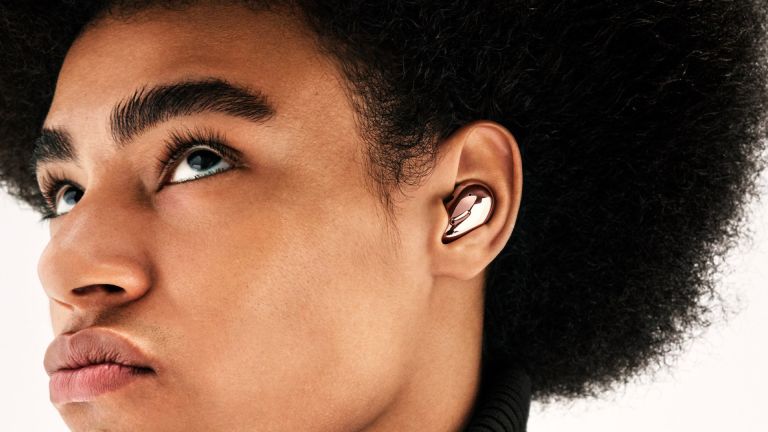Do your true wireless earbuds suck at noise cancellation? Qualcomm may have the answer
Poorly fitting earbuds needn't be a setback

True wireless earbuds are getting better all the time, but advances in audio quality, wireless connectivity, and noise cancellation can be easily scuppered by poorly fitting buds.
Now Qualcomm may have the answer with its Adaptive ANC technology, which it claims "improves user comfort and provides consistent sound quality for true wireless earbuds".
- The best true wireless earbuds of 2020
- Read our AirPods Pro review
- IFA 2020: all the new announcements from the tech expo
Announced at IFA 2020, Qualcomm Adaptive ANC works by adapting its performance "to meet variations in how an earbud fits in a user’s ear, and adapt in real-time to changes in fit as the earbuds are in use".
Better buds
The technology seeks to improve three main criteria in true wireless earbuds: comfort, sound quality, and noise cancellation.
As Qualcomm puts it, "effective ANC performance is usually dependent on creating a tight seal once the earbud is placed into the ear which can cause discomfort and be difficult to achieve".
That tight seal is also important in maintaining noise isolation, preventing your music from leaking from the earbuds and bothering people around you.
Noise-cancelling true wireless earbuds like the AirPods Pro and the Sony WF-1000XM3 come with a range of silicone eartips in different sizes to cater for all ears, but tightly-sealed in-ear headphones can still be uncomfortable for some.
Get daily insight, inspiration and deals in your inbox
Sign up for breaking news, reviews, opinion, top tech deals, and more.
Qualcomm Adaptive ANC is designed to reduce the dependency on forming a tight seal "so a user doesn’t need to push or twist the earbud into the ear".
As the seal of your wireless earbuds can change as you move around – for example when walking or running – the technology can "dynamically adapt performance in real-time according to the tightness of fit and the level of leak-through no matter how or where the earbuds are being used".
According to Qualcomm, the technology works straight out of the box "with no need to conduct a fit test, self-calibration or to try out multiple sets of eartips".
It also negates the need for fiddling with noise cancellation settings in your true wireless earbuds' associated app, automatically adjusting the ANC based on your environment. For example, it can ramp down the ANC strength for quiet spaces or and turn it back up for noisier environments.
The technology comes included with the Qualcomm QCC514x chipset, so that means it won't come to existing true wireless earbuds as part of a firmware update, for example.
Qualcomm says that the new chipset also "integrates support for Voice Assistants, premium wireless audio quality, and extended battery life", making it a potential one-stop shop for improving true wireless earbuds.
It could certainly benefit models like the Samsung Galaxy Buds Live, which feature an open design with no ear tips to create a tight seal against the ear canal – and as a result, the noise cancellation on offer is pretty poor compared to its competitors.
It could also pave the way for noise cancellation in the rumored AirPods 3, particularly if they take their design cue from the original AirPods rather than the AirPods Pro.
Only time will tell, but if this new technology can open up more varied designs in the world of noise-cancelling true wireless earbuds, the form factor could become far more attractive to a wider number of people.
Olivia was previously TechRadar's Senior Editor - Home Entertainment, covering everything from headphones to TVs. Based in London, she's a popular music graduate who worked in the music industry before finding her calling in journalism. She's previously been interviewed on BBC Radio 5 Live on the subject of multi-room audio, chaired panel discussions on diversity in music festival lineups, and her bylines include T3, Stereoboard, What to Watch, Top Ten Reviews, Creative Bloq, and Croco Magazine. Olivia now has a career in PR.
